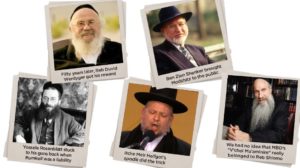Expanded Sound

The Berko brothers — Shea and Avrumi — are pushing their music, and themselves, to new frontiers

Photos: Skystudio
The subtitle for this article should really be something like, “Why I’m listening to eighteen-year-old bochurim and doing it their way.”
It’s not an expression of defeat, or submission, but more like an experiment to connect the dots of half-sentences and shrugs.
It started at a chasunah over a year ago. I found myself surrounded by a group of bochurim who wanted to talk Mishpacha and I was like “go read about spies and SWAT teams,” but they kept at it and wanted to know which musical figure we planned to feature in the next Yom Tov magazine.
I didn’t answer, but my interest was piqued. We all know the biggest names in the industry, and we’ve already covered most of them, so I was curious who they would want to read about.
The unofficial spokesman of the group, with thick peyos and glasses a bit too small for his face, told me in that teenager way that’s part over-confidence and part no confidence at all, to cover someone chal, not “some guy who’s a hundred and fifty years old and my parents get all excited about.”
I took a deep breath. Hey, this kid was talking about legends. Tread carefully, little boy.
I asked who they would want to read about.
This was easy. A few of them answered in unison: “The Berko brothers — Avrumi and Shea Berko.”
Now the boys were getting animated, desperate for me to understand. One of them, a chassidishe bochur in a double-breasted suit jacket, found a way to convey it. “Listen, it’s like this.”
He spoke slowly, like a seasoned salesman making a pitch he knows to be effective. “You know how you have cousins’ weddings and you don’t really want to go and your mother makes you, so you shlep over and make sure to wish mazel tov to Zeidy and Babby and leave?”
Okay, maybe.
“But if the Berkos are there, you leave yeshivah at 5:30 to get there for the kabbalas panim, because you don’t want to miss it, you know?”
This was an argument I had to take seriously. So who were the Berko brothers? I had heard their name, but I wasn’t sure what they did. Sing? Play? Both?
The kids filled me in a bit, and I started making inquiries. What I heard —from people older and much more experienced than my teenage advisors — was that the boys were right.
So this article, one might say, isn’t about where Jewish music has been or even where it is, but where it’s going.
Oops! We could not locate your form.












